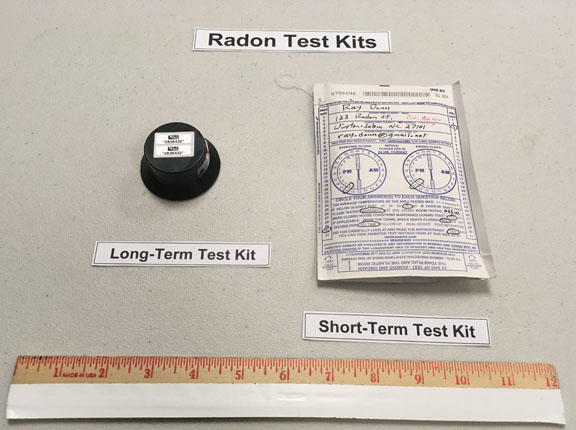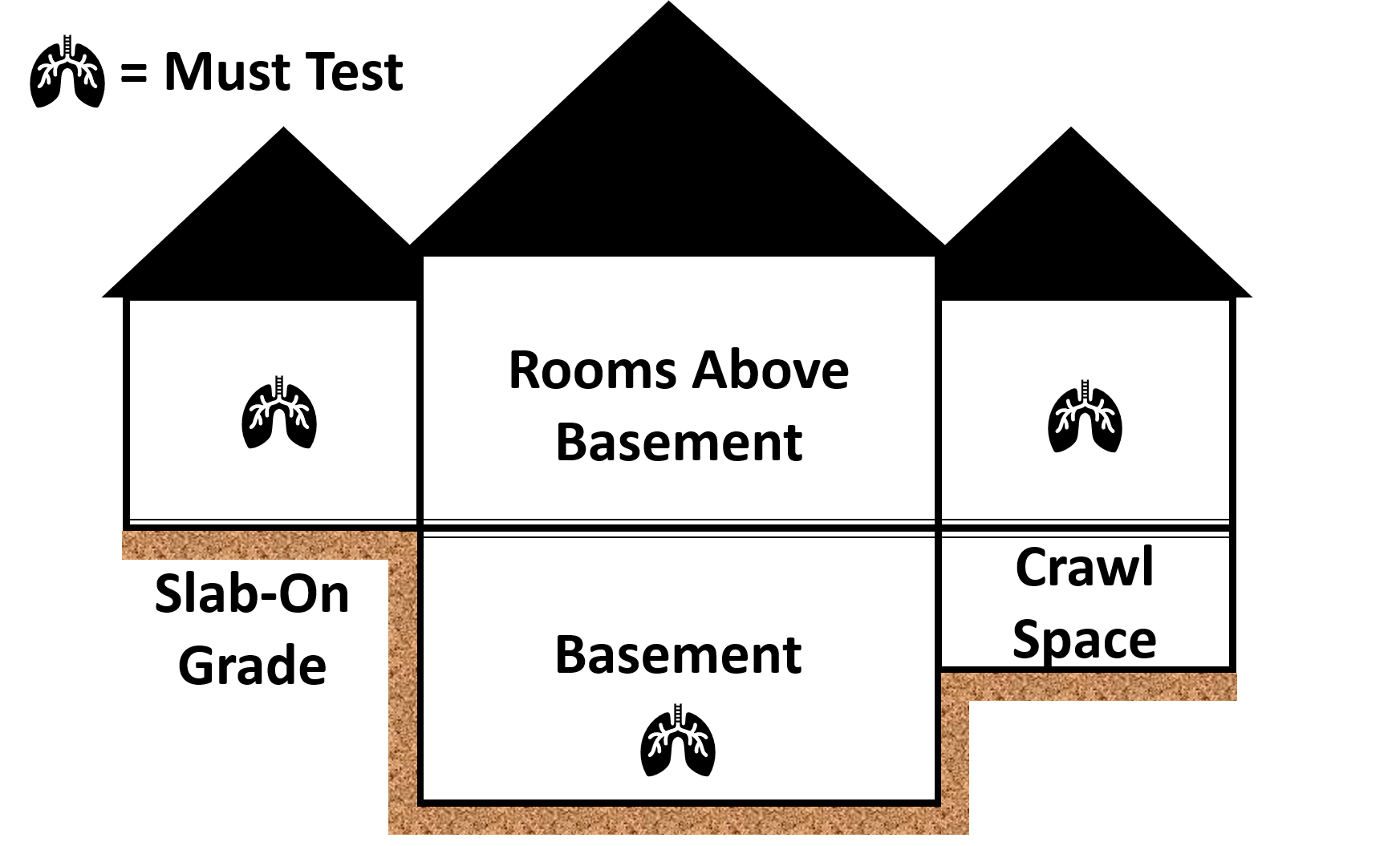A more current study at Columbia College offers clear proof that a solitary alpha particle can cause anomalies and also chromosome aberrations in cells that received no direct radiation direct exposure to their DNA. The radon children likewise release beta fragments and also gamma rays that travel farther through the body. Beta bits travel approximately 1 to 2 centimeters in human cells. Most gamma rays, being even more energised than x-rays, go through the body to the outside. It is much less focused and also much less harmful due to the fact that the soaked up beta as well as gamma radiation is spread over a bigger volume.
Is radon something to worry about?

The average home has about 1.3 pCi/L of radon. Such levels aren't enough to worry about, but under the right conditions, they could make you sick. According to the EPA, a nonsmoker who was exposed to average levels of radon for a lifetime would have a 1 in 500 risk of developing lung cancer.
Rarely, developing materials have actually been discovered to launch radon into structures. If you do not negotiate it into your agreement, the solution is you. Because you will either need to do it for your very own health and wellness after you relocate or you will need to reveal to any future customers if you most likely to sell. It's likely that your future purchaser will make you fix the radon issue prior to they will certainly buy the house.
Where can I obtain a Radon Test Tool?
Is a radon level of 4 Safe?
Sometimes the seller pays for it all, sometimes they fund a credit and sometimes there is a split. Most single family homes will only require one radon mitigation system. A radon system installed by a high quality radon contractor will run in the range of $1200-$1700.
If the house has a boundary structure drain (French Drainpipe), the vent pipe can be attached to the drainpipe, making sure not to disrupt water drain or sump pump function. Call your State Radon Program to identify what are, or whether there are, demands associated with giving radon measurement and also or radon mitigations/reductions in your State.
Trump Desires the EPA Radon Program Cut. So Do Some Researchers.
How do I make my house safe from radon?
Install a layer of gas-permeable aggregate, such as four inches of gravel, beneath the slab or flooring system of your home if you don't have a crawlspace. Cover this layer or your crawlspace floor with plastic sheeting to stop radon gas from moving past that level and into your home.
It's also crucial to comply with suggested screening standards, which can help spot certain cancers early.
Radon as well as interior air high quality system for multi-room, connected monitoring. Featuring TVOCs, temperature level as well as moisture sensors, Wave Mini is the perfect first step into recognizing the health and comfort degree in every space, or an excellent enhancement to an existing air quality ecological community.
Can I install my own radon mitigation system?
In most cases, pros charge about $1,500 to install a radon mitigation system, but you can do it yourself for only about $500 in materials. So if you're fairly handy and have some carpentry, plumbing and electrical skills, you can install your own system in a weekend and save yourself a thousand bucks!
How long does radon stay in the air?
It can be found in all 50 states. Once produced, radon moves through the ground to the air above. Some remains below the surface and dissolves in water that collects and flows under the ground's surface. Radon has a half-life of about four days - half of a given quantity of it breaks down every four days.
How long do you have to be exposed to radon before it becomes a problem?
Radon is a radioactive gas and exposure to it causes 21,000 lung cancer deaths per year—only smoking causes more. Because you can't see, smell or taste radon, it's important to periodically test the air in your home. Believing you live in a region not affected by radon is just one of the myths about this deadly gas.
Where is radon found in the home?
Radon is a radioactive gas that has been found in homes all over the United States. It comes from the natural breakdown of uranium in soil, rock, and water and gets into the air you breathe. Radon typically moves up through the ground to the air above and into your home through cracks and other holes in the foundation.
- When its verified radon degree is 2.7 pCi/L or above, the World Health Organization suggest that a home be mitigated.
- This choice allows general dangers from exposure to radon, both through air as well as water, to be minimized.
- High degrees of radon in homes can be successfully remediated by sealing such entrance points and by setting up adequate air flow.
- No degree of radon exposure is thought about entirely safe, however the EPA only recommends decreasing radon degrees in your house if your long-lasting exposure standards 4 picocuries per litre (pCI/L) or higher.
- If you have checked the air in your home as well as found a radon problem, as well as your water comes from a well, have your water evaluated.
- The systems produce constant vacuum in the soil under cellars, concrete slabs and also crawlspaces.
Is a radon level of 5 bad?
Safe radon levels. The best radon level measurement https://answers.informer.com/user/urutiud9lb would be zero. The average global outdoor radon level varies between 5-15 Bq/m3, equal to 0.135-0.405 pCi/L. For every 99.9 Bq/m3, or every 2.7 pCI/L increase in long term radon exposure, lung cancer risk rises 16 percent.
Who is most at risk of lung cancer?
The more uranium there is, the more radon there is. That makes radon the second leading cause of lung cancer after smoking. But even minor symptoms like headaches, feeling unusually tired, itching or burning eyes, irritated skin, nasal congestion, a dry throat or nausea could be due to your home's indoor air quality.
What do you do if your house has radon?
Radon can seep into any home that is in contact with the ground. It is undetectable unless you perform a radon test. It is the second leading cause of lung cancer and according to the EPA and CDC, it kills more than 20,000 annually. It is not something you want in the home you are buying.
Is radon only in the basement?
Radon is completely odorless as well as being invisible. Because it is often found unexpectedly in basements, some people mistakenly believe that it only occurs in basements. Most commonly homes with basements are suspect for having higher radon levels.

Is radon really a big deal?
Radon is a radioactive gas that has been found in homes all over the United States. It comes from the natural breakdown of uranium in soil, rock, and water and gets into the air you breathe. Radon typically moves up through the ground to the air above and into your home through cracks and other holes in the foundation.
How bad is a radon level of 8?
The EPA strongly recommends radon mitigation if your radon levels are above 4 pCi/L. While radon levels below 4 still pose a health risk. They recommend you consider mitigation if your radon levels are between 2 and 4 pCi/L. They are quick to point out that there is no known safe level of radon.
What causes radon?
Being exposed to radon for a long period of time can lead to lung cancer. Radon gas in the air breaks down into tiny radioactive elements (radon progeny) that can lodge in the lining of the lungs, where they can give off radiation. This radiation can damage lung cells and eventually lead to lung cancer.
Does Radon make you tired?
The more uranium there is, the more radon there is. That makes radon the second leading cause of lung cancer after smoking. But even minor symptoms like headaches, feeling unusually tired, itching or burning eyes, irritated skin, nasal congestion, a dry throat or nausea could be due to your home's indoor air quality.
Do all homes have some level of radon?
The EPA estimates the lifetime risk of radon-induced lung cancer for never-smokers at 7 per 1,000 people, compared with 62 per 1,000 for smokers exposed to a level of 4 pCi/L. Your risk goes up with your exposure to radon and cigarette smoke over time.
How much does radon cost per gram?
Radon is available at a cost of about $4/mCi.